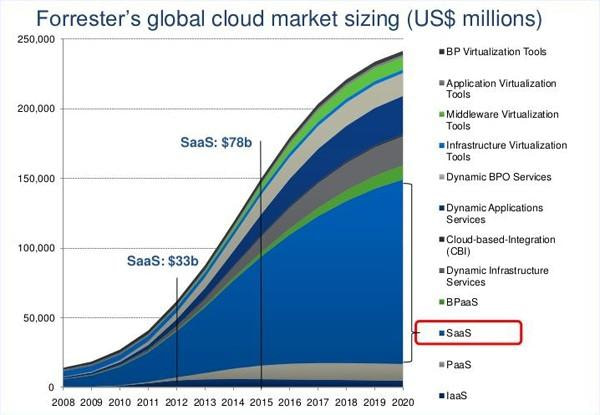The introduction of Software-as-a-Service model gave us a lot: new quality (SLAs), better financing (lower CAPEX, reasonable OPEX), effortless usage. We don’t need any infrastructure, we care less about the administration. We use SaaS-based CRMs (Salesforce, Close.io, Pipedrive, BaseCRM), Project Management tools (JIRA, Basecamp, Trello, Clarizen), help desk software (ZenDesk, Freshdesk, Desk.com, JitBit). We use it, we like it, the ROI is good.
The number of unicorn companies is increasing faster and faster. Most of those businesses have used technology as leverage for rapid, exponential growth. Lots of those are not new concepts just brilliant executions of what we already had in a modern, better scalable model.

When we look at the new unicorn club companies, lots of them use the SaaS business model as a base for growing the revenue. They have subscriptions, pay-per-use, shared revenue. But as for what they deliver… it’s not software anymore. They use software delivered with the SaaS-based model as an automated or semi-automated platform that delivers non-software services to customers. Let’s take a look at a few prosperous SaaS companies:

Uber gives you an app that basically transports you from point A to point B – it’s a taxi / private driver service in your pocket! It’s not the software you use or the app’s functionalities that you value – it’s a safe, fast, affordable and good quality transportation that you buy and the app itself is just a delivery platform. The same model works for Airbnb, SocietyOne, Getaround and other SaaS companies. The biggest taxi service has no taxis, the biggest hotel has no rooms, the biggest retailer has no inventory, the biggest bank has no capital, the biggest car rental has no cars, the biggest media owner does not create any content – and so on. What the customers value are not the material products offered but the services these companies deliver – through a software.
Implications
The model reversal from software-as-a-service to service-as-a-software has remarkable implications for new ventures and market opportunities that we should consider.
The exponential growth at your reach
Let’s take a service that many of call centers offer. Setting up meetings for salespeople. The service model is quite simple.
- You give them a list of potential customers
- They call each of them and ask if they are interested in meeting you
- They set up a meeting according to your availability
If this call center uses 100% of their workforce, serving 100x more customers would require them to hire 100x more people. It costs a lot of money, brings a lot of risks (what if projects are over) and takes a lot of time.
Now let’s imagine that they have software that reaches out to your targets by e-mail or phone, presents them your calendar and enables them to choose the meeting time&place from there. Nobody is required to perform the service. If this company wanted to serve 100x more customers, they would have to increase a few numbers in their cloud configuration and… it’s done. Effortlessly scalable to enormous operations at a very low cost, very low risk and a very short time. This also brings some new competitive advantages. Automated service is cheaper than manually performed so the company can either:
- lower their prices, making the service affordable for new customers while keeping the same or even higher margin,
- improve cash flow and ROI.
The future of SaaS

In coming years, we will be seeing more and more services globalize and automate in this model. There are already many projects that follow this concept growing rapidly:
- health tests and interpretations,
- legal services (automatic generation of legal documents),
- debt collecting,
- virtual personal assistants with AI (scheduling meetings, booking hotels, flights, trains, buses, web research),
- car/equipment rental,
- … and many others.
All the above either already exist as a service delivered by apps or can easily transform to the new SaaS model. Does Service-as-a-Software sounds interesting to you?

